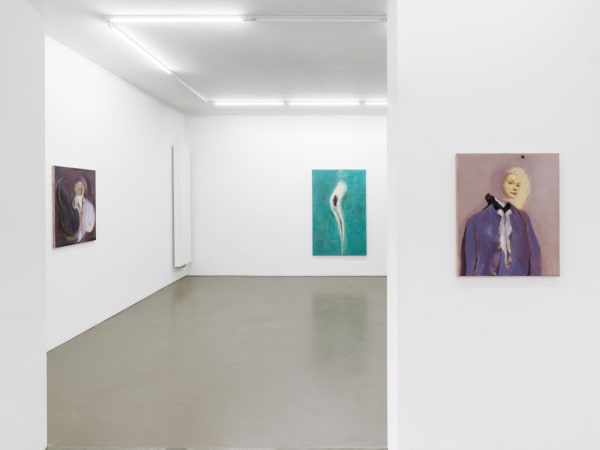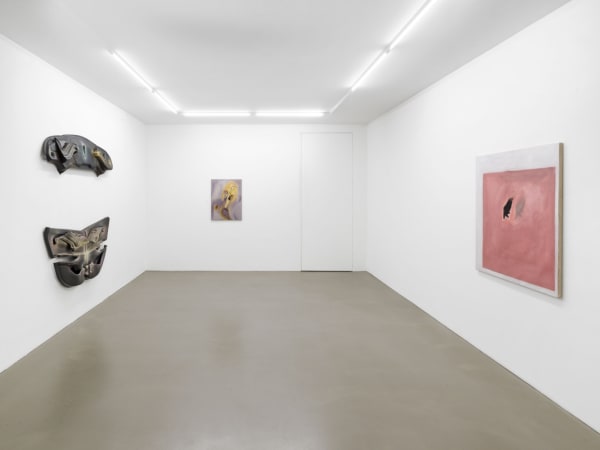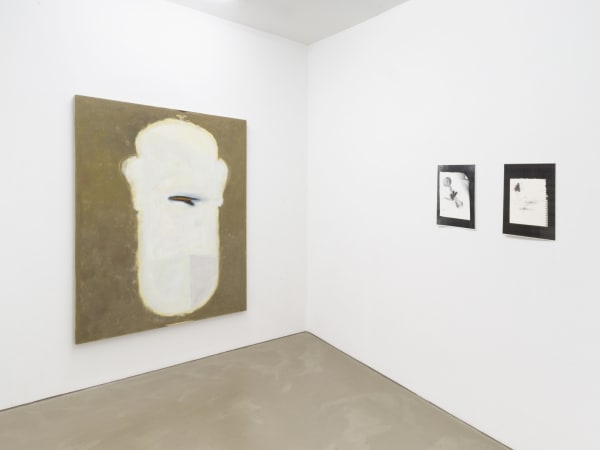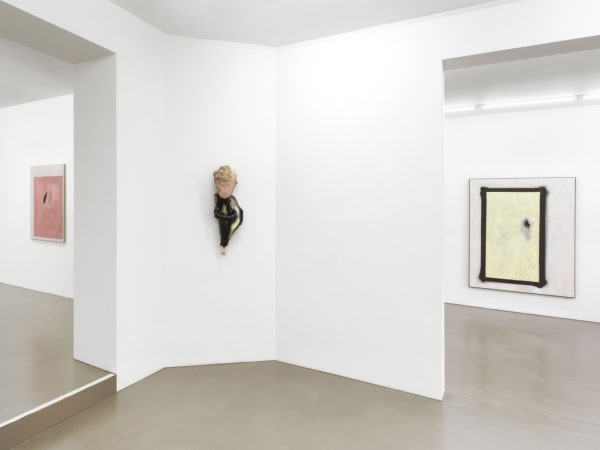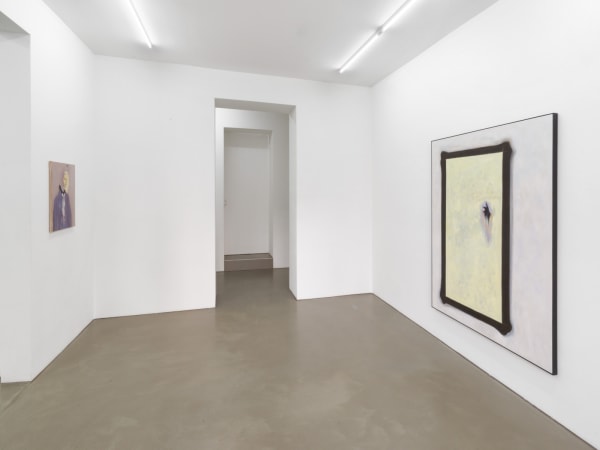With Anciens Régimes, Thomas Helbig has now turned his focus to figuration. Among the works on display are, among others, anonymous portraits of people dressed in historical clothing reminiscent of the Rococo. What they have in common is their open, inconsistent form: A head is displaced, does not fit the body, a face is partially blurred, the body mutatingly expands into the surrounding space or is pierced by it. In another work, the body seems to be drawn out of the picture ground into the light, the face becomes its simultaneous embodiment, a star. It is not for nothing that the term portrait goes back to the Latin word prō-trahere for 'to bring to light' and 'to draw forth'.
The blending of the painterly and the depicted is comprehensive and essential in Helbig's oeuvre. The abstract pictorial spaces that have pervaded Helbig's painterly work latest since the ‘00s can thus be seen as the universe that surrounds us as well as the cosmos of painting itself, in both manifestations of which a constant coming and elapsing is included. The often gloved hands that repeatedly appear in Helbig's paintings can also be interpreted in this way. Hands are symbolic of the power to create and the will to rule; just think of the hands of God and Adam touching in front of the heavenly surroundings in Michelangelo's depiction of The Creation of Adam. At the same time, in works of the Baroque, but also in modern and contemporary art, it is the hands that indicate how artists reflect on their work in the tension between intellectual design and concrete execution. In view of this iconographical narrowing of head and hand, it is remarkable that Helbig's hand usually appears separately from the rest of the body, if not as an isolated element. Detached in this way, it is completely absorbed in its deictic symbolism. In this sense, the hand, freed from domination, refers to abstract, infinite space as well as to the material of the colors and contours, from which, to paraphrase the initially quoted Siegfried Kracauer, a knowledge of its own emanates. According to Kracauer, the mere surface must be destroyed for the representation of a supra-temporal meaning, because: “Even the work of art disintegrates in time; but from its crumbled elements rises what is meant by it[.]”
Where the independent hand blends almost harmoniously into the space of the painting, the various limbs in Helbig's wall objects give the impression of a deliberate fragmentation. The dark lacquered assemblages, some of which are decorated with massive ornaments, spread out like wings between baroque and technoid impressions. Sculptural body parts such as legs, children's feet or fingers – all found objects from the world of toys and decoration – are draped into them. Depending on the degree of stylization, they look like ornaments or relics of a sinister cult with practices similar to those that appear in Marquis de Sade's story The 120 Days of Sodom or in David Cronenberg's film Crash.
One might be tempted to see Thomas Helbig's paintings and sculptures as an expression of a dichotomous world view between order and chaos, good and evil. However, this would not only be too short-sighted, but also a misunderstanding, as Helbig's artistic practice is by no means associated with a morality of either/or. Instead of following corresponding guidelines, i.e. regimes, his works resist any reduction of their context. At the same time, in their characteristic amalgam of formal and thematic fragments from art and cultural history, they reveal their very own poetry of specific pictorial power.
– Cora Waschke
March 7, 2025
